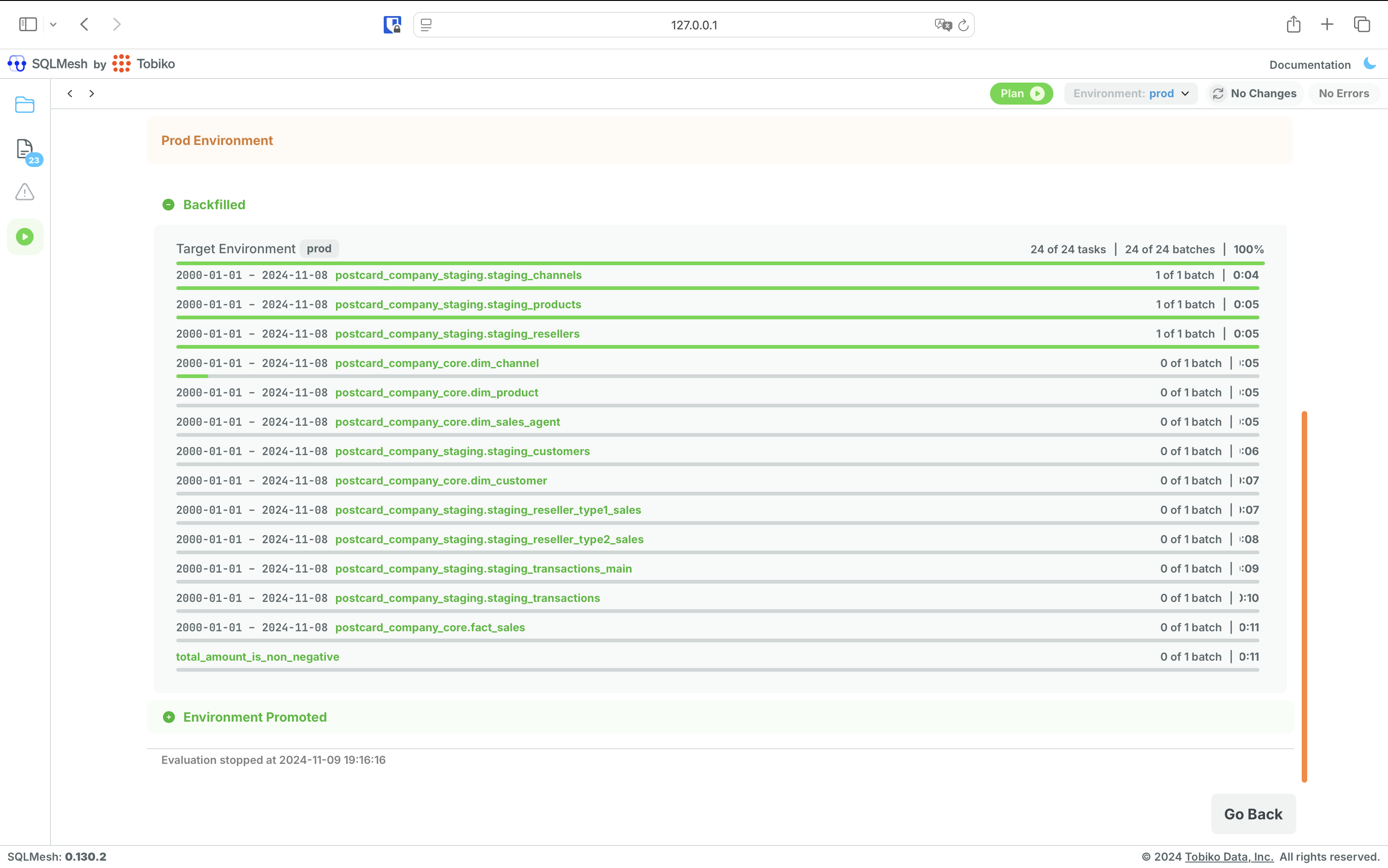This application is a containerized Analytics suite for an imaginary company selling postcards. The company sells both directly but also through resellers in the majority of European countries.
- Docker (docker compose)
- DuckDB
- SQLMesh using dbt adapter
- Superset
Generation of example data and the underlying dbt-core model is available in the postcard-company-datamart project.
-
Rename
.env.examplefile to.envand set your desired Superset password. Remember to never commit files containing passwords or any other sensitive information. -
Rename
shared/db/datamart.duckdb.exampletoshared/db/datamart.duckdbor init an empty database file there with that name. -
With Docker engine installed, change directory to the root folder of the project (also the one that contains docker-compose.yml) and run
docker compose up --build -
Once the Docker suite has finished loading, open up SQLMesh Web UI
Click on Plan
Then Apply Changes
Upon the changes being applied, you can query the datamart via the SQL interface:
- To explore the data and build dashboards you can open the Superset interface
Demo credentials are set in the .env file mentioned above.
- SQLMesh: 8000
- Superset: 8088
Generated Parquet are saved in the shared/parquet folder.
The data is fictional and automatically generated. Any similarities with existing persons, entities, products or businesses are purely coincidental.
- Test data is generated as Parquet files - using Python (generator)
- Data is import from parquet files to staging area in the Data Warehouse (DuckDB)
- The data is modelled, building fact and dimension tables, loading the Data Warehouse using SqlMesh (with the dbt adapter for model compatibility)
- Analyze and visually explore the data using Superset or directly querying the datamart via the SQL IDE provided by SQLMesh
For superset, the default credentials are set in the .env file: user = admin, password = admin
The docker process will begin building the application suite. The suite is made up of the following components, each within its own docker container:
- generator: this is a collection of Python scripts that will generate, insert and export the example data, using postcard-company-datamart project
- sqlmesh-dbt: the data model, sourced from postcard-company-datamart project
- superset: this contains the web-based Business Intelligence application we will use to explore the data; exposed on port 8088.
After the DAGs have completed you can either analyze the data using the querying and visualization tools provided by Superset (available locally on port 8088), or query the Data Warehouse (available as a DuckDB Database)





